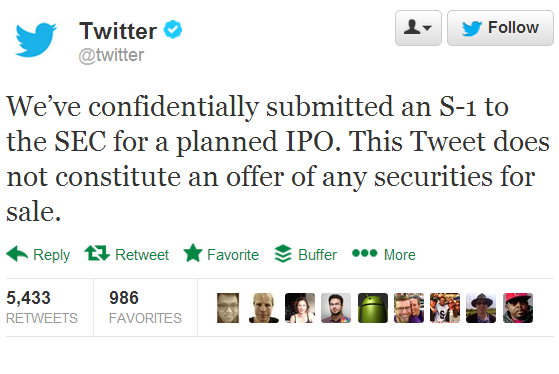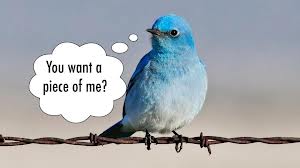By James Burchill
BURLINGTON, ON. There has been a lot of talk about the “stealthy” initial public offering (IPO) that Twitter filed with the U.S. Securities and Exchange Commission (SEC). A lot of the buzz is that this is somehow a “circumvent” of the otherwise open system used for filing to be publicly traded in America. Most of those reports can be discounted with one simple fact: “stealth” initial filings for an IPO are legal, though new, they have a real purpose.
When a company filed an IPO before the new rules took effect this month, that company had to fully and publicly disclose all of its filing paperwork. This meant that the press, potential investors, and the company’s competition now had access to information that may have been proprietary, was almost assuredly preliminary, and that was subject to change as negotiations with regulators commenced before the actual IPO launched. This process often takes months.
Under the new rules, the filings with the SEC, up until paperwork is finalized, can be kept confidential and not be publicly disclosed. This means months of disclosure is lost, but it also means that the initial stumbles, mis-interpretations, and months of being wide open to the competition are no longer there.
During the draft stage of the IPO prospectus, under the new rules at the SEC, this information is kept private so that the company can continue to operate normally and with the secrets it might hold from its competitors intact. This change came with the JOBS Act that was signed into law as part of the overall economic boost efforts being made by Washington, D.C. for the U.S.

This is when the public loves the stock market. But remember Bre-X Mining, it is not always gold in what you think you see.
Twitter is using this provision with its IPO to shield it from unwanted scrutiny during the initial phases of the S-1 filing. It’s smart to do so. Companies like Facebook, Google and others would love to see how the financials within Twitter, as well as their future plans for boosting revenue, are being implemented. Under the old system, this would have given them several months in which they could craft competing options or even usurp Twitter’s plans altogether by offering something better, sooner thanks to that foreknowledge.
Now, they won’t know that information until Twitter wants them to, or is ready to go public. Their time window will be far smaller at that point and so they’ll be less likely to be capable of acting on the information gleaned.
This provision also gives companies like Twitter, who may not be sure about the timing for an IPO, the opportunity to delay or even cancel going public until it’s ripe and to do so without losing face or looking weak.
Chances are, Twitter is serious about going public and plans to follow through with this IPO, but in the information technology field, especially social media right now, every moment is a chance to win or lose at the game. Things change almost daily, so keeping information close to your vest is an important part of the game.
As it is, when the information is made public, there is still a three week window (or so) before the IPO actually happens and investors can start offering money for shares of Twitter.
Overall, this new idea is a good one and will make companies in the U.S. more likely to use the process of going public through an IPO sooner instead of later. That’s good for the economy overall, even here in Canada.





















